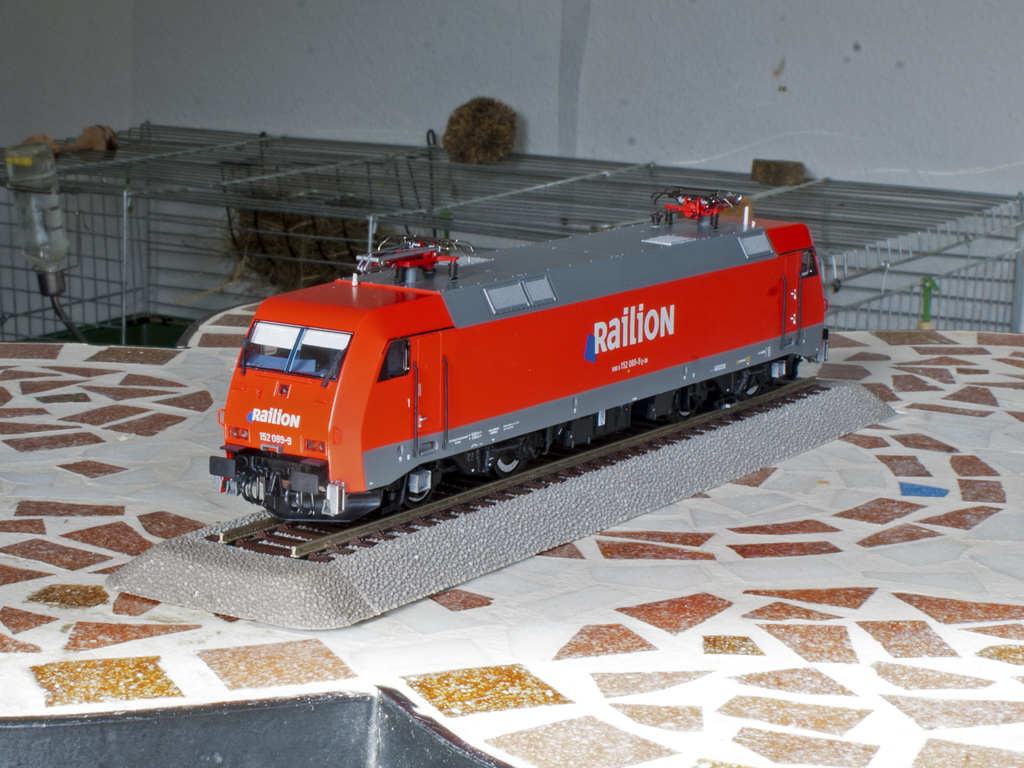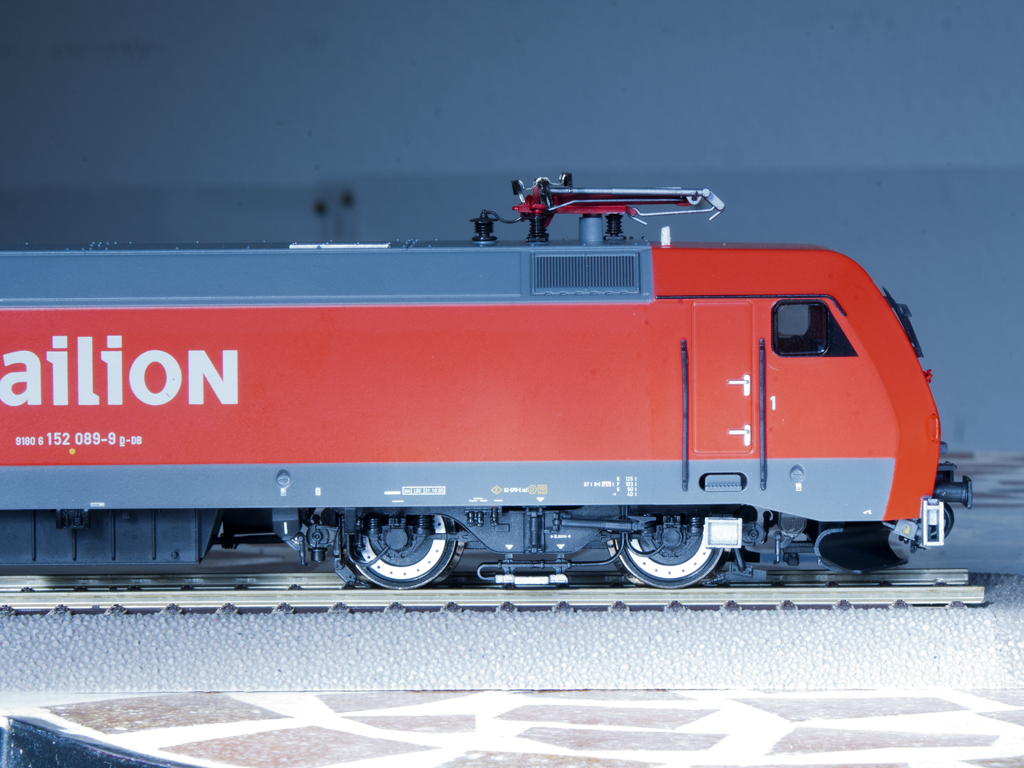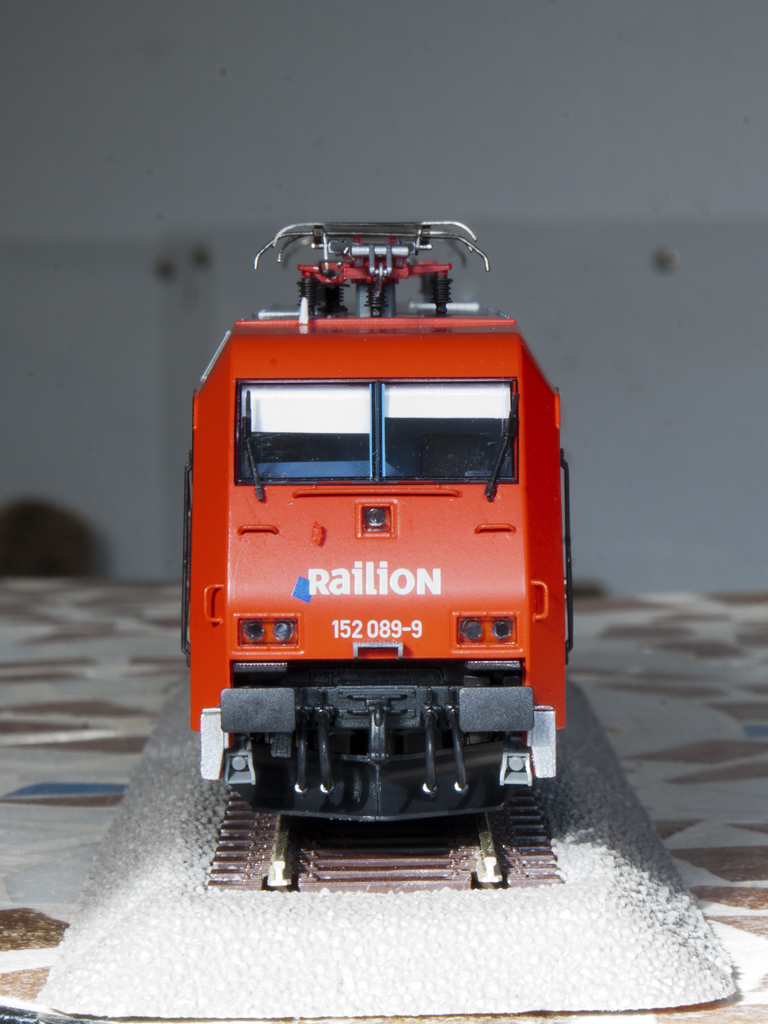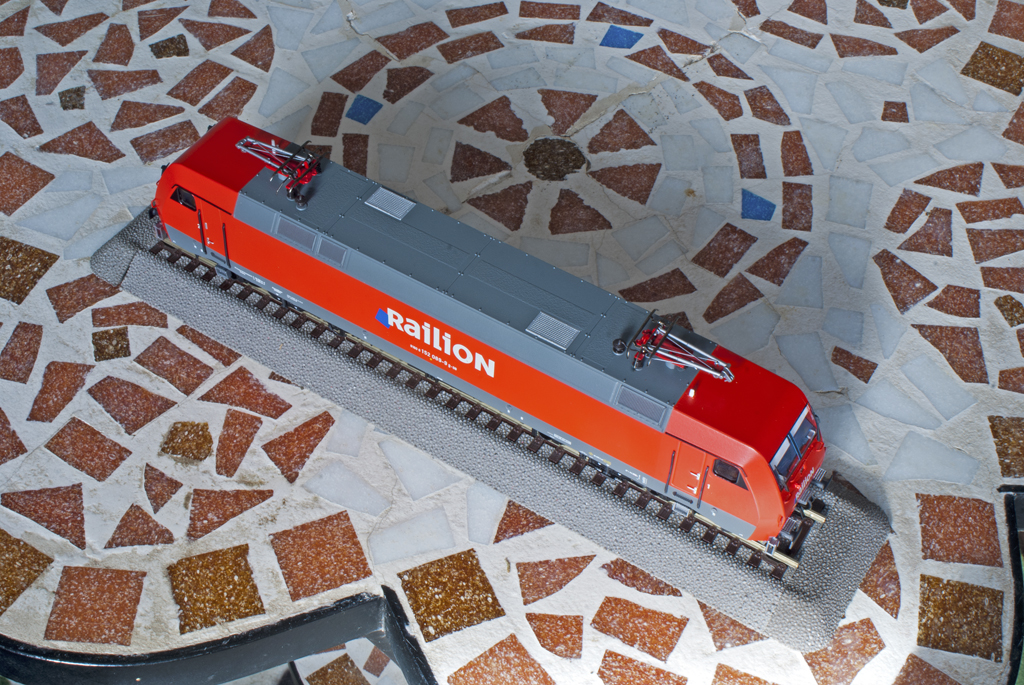Anachronistic Eurosprinter – DB Schenker class 152 with "Railion I" markings
Morning all!
As I'd like to reduce the backlog of updates a bit, I should now like to present you with one of the oddballs to have been part of the DB Schenker locomotive inventory – bringing variety even to highly standardised locomotives as the class 152 electrics. The model we're looking at here is one of the newest releases of the highly refined Roco rendition of this class, and was marketed with catalogue number 72482.
For basic information about Siemens Eurosprinter type locomotives, I should like to point you towards my baseline information posting, Eurosprinteristics.
In 1993, Deutsche Bundesbahn held a tender for a new freight locomotive with three-phase AC propulsion which was primarily meant to replace the class 150 Co'Co' electrics, of which 194 examples had been built between 1957 and 1973. Eventually, Krauss-Maffei – who were still an independent enterprise at the time – and Siemens were awarded with a development and production contract.
The locomotive, designated class 152, which emerged from this project was called the ES 64 F type, in keeping with the nomenclature established with the prototype 127 001, also known as ES 64 P. , and was to receive the DB class number 152 eventually.
152 001 was rolled out at the Krauss-Maffei plant in Munich on 10 December 1996, and then entered route trials together with four additional 152s which could be completed by 31 July 1997. Further production locos followed from 1998 onwards, with a total of 170 units for Deutsche Bahn and two additional ones for the Dispolok leasing pool being built until 2001. While DB Cargo – as Deutsche Bahn's freight sector was called at the time – originally meant to order 195 units, a change of plans was needed when the Austrian railway authorities refused to certify the 152 for the Austrian network. As a workaround, the last 25 orders for 152s were therefore changed into an equal number of class 182 locos, which were Siemens ES 64 U2 type locos as operated by the Austrian Federal Railways (ÖBB) as classes 1016 and 1116.
While Deutsche Bahn had also specified an additional option for 100 more 152s, this was eventually changed into an equal number of the four-system class 189 freight locomotive, or ES 64 F4.
The two Dispolok locomotives were eventually sold to private freight operator ITL in 2005, retaining the basic yellow and silver Dispolok livery.
Overall, the ES 64 F's specifications are largely identical to those for the ES 64 U2, except for the lower top speed and the fact that it is outfitted only for 15 kV AC:
Overall length – 19,580 mm
Width – 2,960 mm
Height – 4,260 mm
Power output – 6,400 kW/8,582 hp
Initial tractive effort – 300 kN
Service weight – 87 tonnes
Top speed – 140 kph (87 mph)
As it was primarily designed for freight traffic, the ES 64 F was built with bogies with nose-suspended motors, which at the time were considered suitable only for up to 140 kph.

This model represents 152 089 as she appeared until summer 2013, having retained the "Railion I" logos far longer than any other loco from the DB Schenker fleet. This logo variant had the tilted blue square at the bottom left of the "Railion" text rather than at the bottom right. Furthermore, 152 089 had never received the characteristic horizontal warning stripes on the cab faces, but did have the UIC-TSI formatted running numbers applied by about early 2010 – thereby mixing and matching a number of oddball features.
152 089 was built in 1999 with the works number 20216, and originally accepted by then DB Cargo on 1 February 2000. The locomotive was most recently inspected at the Dessau repair works on 29 July 2013, and has lost her anachronistic markings.

The model has NEM extension coupler pockets which can be removed for displaying it in a cabinet, and a pair of snow ploughs without cutouts for the couplers. Looking closely, you can see what I think is a faithful rendition of the bogie details, with the gearboxes being suitably compact and allowing a free view between the wheelsets. As cheek brake disks were a novelty on German engines at the time the ES 64 F was designed, one of the nicknames applied to the 152 in particular was "Ferrari" - due to the red colour as well as those "racing style" brake disks. Also note the LZB antennas inside the snow plough.
The inscriptions on the Cab 1 end include the service weight of 87 tonnes and the usual braking gear data: KE-GPR-E mZ, disk brakes and ECP brake equipment; and the braking weights table:
R+E 145 tonnes
R 125 tonnes
P 103 tonnes
G 90 tonnes
Also note the silver-painted PZB transceiver between the wheelsets and the very tiny warning signs on the outside of the ETS sockets.

The inscriptions on the Cab 2 end include the owner - DB Schenker Rail Deutschland AG, Nuremberg - , overall length of 19.58 metres and distance between bogie pivots of 9.90 metres, as well as the builders - Krauss-Maffei and Siemens - and the finishing date of the last paint job.

Roco also chose to make the windscreen wipers separate parts. As previously mentioned, the ES 64 F was given additional handrails and tread plates on the cab faces from 2005 onwards, which have been represented on this variant of the model. Originally, the central tread plate between the buffers and the one above the left-hand buffers as well as the handrails in the centre below the windscreen and the two on the left side of the fronts did not exist, and were basically inspired by the arrangement on the class 189/ES 64 F4.

Looking at the roof, all there's to be seen is that it is fairly minimalistically equipped! The major features are only the two SSS 87 type pantographs, as the 152 and the contemporary class 145 medium freight locomotive developed by ADtranz during the same period were explicitly intended to have a tidy a rooftop as possible for easier maintenance and better protection. Therefore, the busbar and circuit breaker are located inside the loco's body. The no-skid walkway strips are represented as well.
Thank you for reading!
-
 5
5




1 Comment
Recommended Comments
Create an account or sign in to comment
You need to be a member in order to leave a comment
Create an account
Sign up for a new account in our community. It's easy!
Register a new accountSign in
Already have an account? Sign in here.
Sign In Now